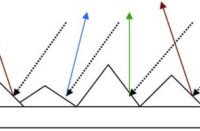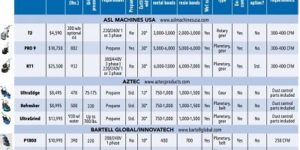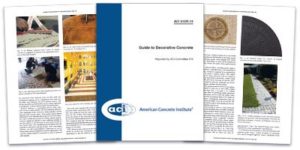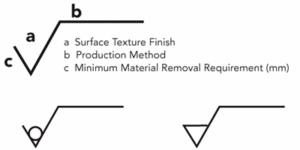The time will come when a general contractor, architect or another flooring contractor will ask you to bid on polishing floors in a new construction project.
They invite you to enter their virtual plan room or physical office and view the plans, specs and addenda. Where do we start? Why can’t the GC just tell us which drawing number to reference and how many square feet are being polished and let us give him a quote? This has happened to me only once since 2001, so do not count on it being that easy!
Polishing new floors is a unique segment of the construction process with many small but important details that differentiate it from polishing older floors.
The ability to navigate and comprehend the daunting amount of technical paperwork in a new-pour project will make the difference between winning contracts (and making money) or fruitlessly going through the bidding process and never winning the contract. Unfortunately, the devil really is in the details! Let’s dig into the mound of specifications and drawings you’ll likely encounter and find our most important sections.
It is vital to understand the overall structure of these documents. The guiding structure used by most architectural firms is MasterFormat, a system created by the Construction Specifications Institute, or CSI. This standards format is designed to organize specifications and other written information for building projects. A specification is the document that is written by the specifier at an architectural firm. The specifier writes up the details for multiple projects and for ALL of the different divisions that comprise the entire building, including Concrete, Plumbing, Metals, Wood, Finishes, etc. Currently, there are 48 Divisions.
Section 03 35 43 Polished Concrete Finishing
Search the project documents for several key items, beginning with the specification for polishing. This will normally be found in Division 03, Concrete. The 03 35 43 Polished Concrete Finishing subdivision, created about three years ago, is what’s used most often. Specifiers rarely understand how to polish concrete, so this section may not be fully fleshed out. Also, many nonstandard subdivisions within Division 03 are also still being used for polishing.
There are three parts to all specifications, and the 03 35 43 Polished Concrete Finishing subdivision is no different. Products and Manufacturers are specified in Part 2, and Execution will be found in Part 3. Read through parts 2 and 3 to verify that it is worth your time to bid the project.
Next we will locate other important documents. Some are specifications, and the rest are either drawings or addenda with updates on the project.
Section 03 30 00 Cast-in-Place Concrete
Important items covered here include mix design, compression strength in psi, and air entrainment percentages. Concrete mixes typically have strengths that range from 2,500 psi to 5,000 psi, with engineered-design mixes at about 10,000 psi for specialized applications. The psi (and finishing procedure used) help you predict many of the concrete’s characteristics in order to make an informed selection of a starting grit level of metal-bond diamond tooling.
The percentage of cement substitute (supplementary cementitious material) is commonly around 20-30 percent, but occasionally we encounter up to 50 percent. These substitutes are also called pozzolans, and include fly ash, ground granulated slag, silica fume and metakaolin. The more substitute in the mix, the denser the slab and the slower it reaches ultimate strength. This can affect the timing of the first cut. Also, the higher the percentage of substitute, the less vivid any topical color will be.
The percentage of air entrainment should be 3 percent or less for polished concrete. This percentage helps you to predict how many small air holes to expect when cutting through the crust of the slab. There are now many “grind and fill” products, and it may be necessary to add a line item to your bid if the air percentage is high.
Regular and lightweight concrete are different materials, and they will polish differently. They take stain differently, require different diamonds, and need different quantities of chemicals such as silicate densifier. Getting concrete made with these two types of mixes to match in appearance can be difficult. This should be mentioned during the pre-con meeting.
Levelness (FL) and flatness (FF) numbers will help you figure out if a specified appearance can be achieved. The higher the FF (floor flatness) number the flatter the surface, and the flatter the surface the more uniform the reveal can be. If the specification calls for a CPAA (Concrete Polishing Association of America) Class A cream finish, a floor with FF 50 or higher is recommended and will greatly reduce the chance of revealing sand and small aggregate.
Curing methods affect the polishing process. If a method is not specified, ask the architect. Having the surface cured correctly is key to all processing with diamonds. A surface that is soft and has a lot of laitance will cut much differently than a hard, well-cured one. The spider cracks or plastic shrinkage cracks occur during this period and can be avoided when the concrete is cured according to ACI C 309.
Section 01 00 00 General Requirements
This section should get a quick read for the overview on how the project will be run. It will cover bonds, how to make a substitution and many other general housekeeping items.
Drawings and Finish Schedule
This should be in the A-numbered (A stands for Architectural) pages — for example, A 101. Look for Floor Finish and CONC, PC or PC-1 for the actual floor plan areas to be measured. Find the scale located on the plan and then either do an online takeoff or use a ruler to calculate the square footage from the scale of the drawing (i.e., 1/4-inch = 1 inch).
Once all of these documents have been digested, look at the flow of the job. Is it one big open area or many small rooms with lots of edges? There may be an opportunity to educate the architect, owner or GC about how to better sequence the polishing.
Make use of Concrete Polishing Association of America specifications. They have been written by some of the foremost experts in polishing today and can assist in resolving questions and producing outstanding polished concrete floors.
The goal is to do the reading and research. Then we will be prepared to ask the right questions and bid the project accordingly.
Specifications and drawings are our best friends, and understanding this information keeps you in the driver’s seat. Refer often to the specs and drawings. Subtly let the GC know that you expect the job-site conditions to follow these documents. Submit an RFI when polishing-related items do not meet specified written standards. This will help you complete the project on time and on budget, and you may earn extra compensation associated with change orders.
Taking the time to understand MasterFormat will allow you to bid correctly on new projects and add value to your polishing business. The devil is definitely in the details, but the details will guide you to profitability and project satisfaction.















